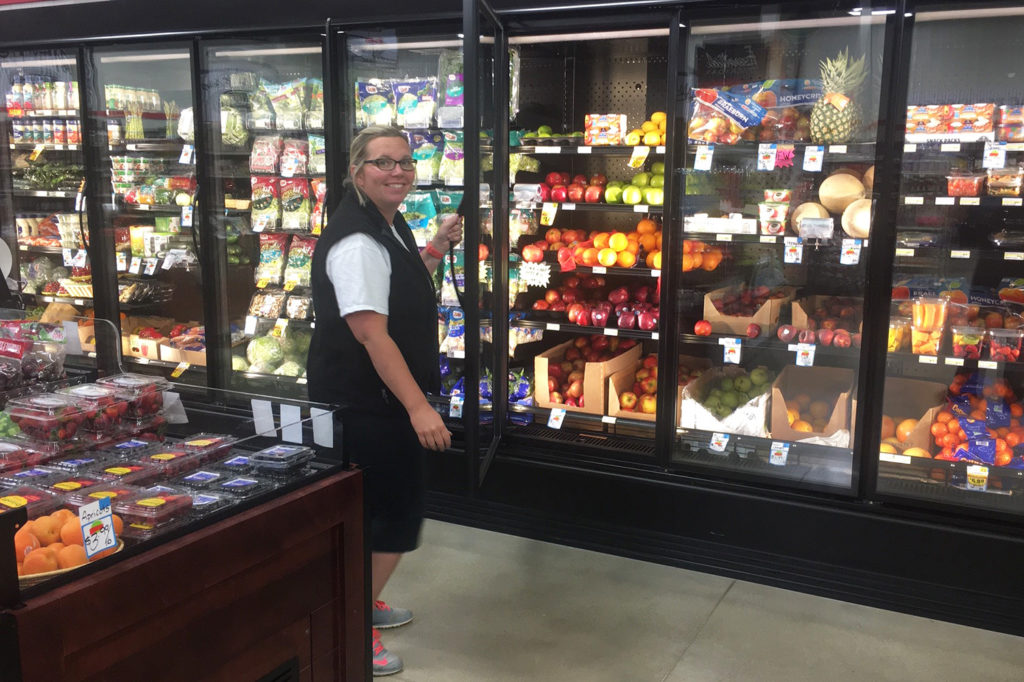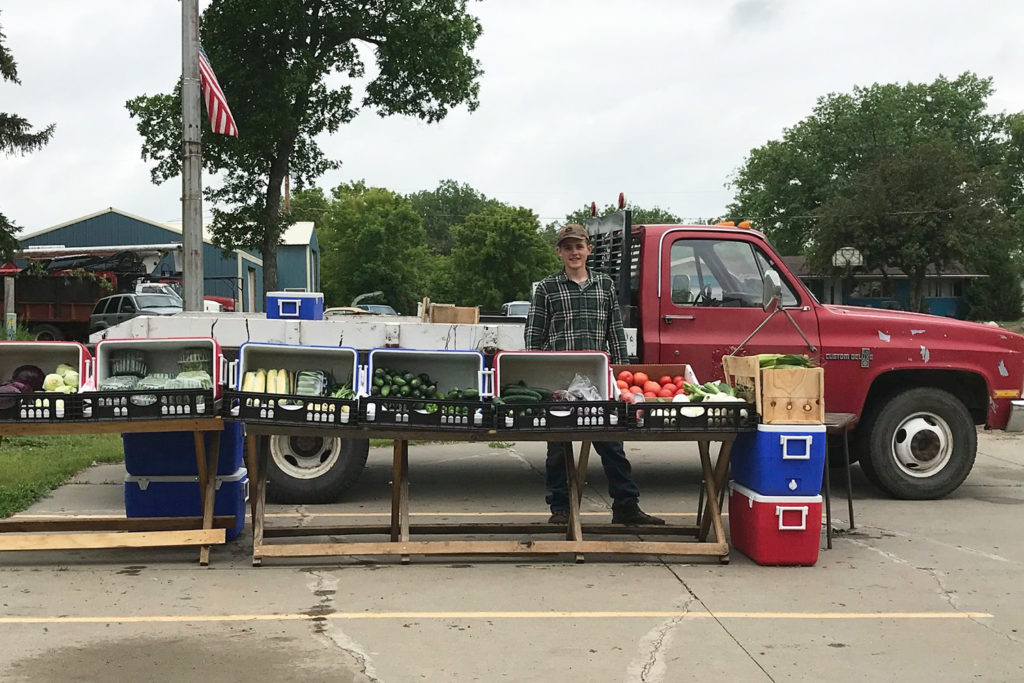
As a dairy farmer-turned-owner of a full-service grocery store in New Salem, North Dakota, Allan Tellmann knows the challenges of trying to make a profit on both sides of the food supply chain.
“Our biggest struggle probably is selection, having everything our customers want. In the last 50 years, what customers expect grocery stores to carry has really changed,” said Tellmann, whose store is located half an hour from a Walmart and other “big guys” in Bismarck.
To help small-town grocery stores like Tellmann’s Market survive, the North Dakota Association of Rural Electric Cooperatives began an initiative in 2016 to tackle the issue of food deserts. Its latest project is “Homegrown Revolution,” a marketing campaign that features a short video on how local growers and grocers can work together to provide fresh, affordable produce.
The campaign was prompted by concerns that COVID-19 business shutdowns would disrupt local food distribution chains, said Lori Capouch, NDAREC’s director of development services.
“A lot of people are wondering how to operate differently right now,” said Capouch, who’s also the force behind North Dakota Rural Grocers Initiative. She’s heard from “growers hesitant to grow their crops because they currently produce for restaurants and didn’t believe they had a market.” She also said rural consumers were “concerned about the ability of small-town grocery stores to secure a steady supply of produce during the pandemic.”
It’s easier to get local produce into stores than most people think, said Capouch.
“We’re trying to get rid of those myths that there’s a lot of regulations or that it’s illegal under health standards to purchase and sell local produce. We want to show grocers and growers how easy it is by simplifying the process of figuring out the regulations so they can make those connections.”
A support network was invaluable for Kolter Karges, who at 20 took ownership of Little Greens near Hannover. The initiative helped him find outlets—including Tellmann’s Market—to sell kale, spinach, cabbage and other produce grown in his three greenhouses. He also operates a Community Supported Agriculture (CSA) program that sells harvest shares to members.

“We’re not technically a food-handling facility; all we’re doing is harvesting and packaging. There’s not a lot of red tape for vegetable producers, unless you’re really, really big,” said Karges, who appears in the video. “We pick it and we can haul it to the grocery store, take it to restaurants, or provide direct to customers. It’s really simple.”
But misinformation and lack of a support network can make it “scary” for novices to approach outlets with their produce, and that’s where the NDAREC initiative is particularly helpful, said Karges.
“Experience is the biggest hurdle, building that experience so that you know how to handle certain situations. If you run into a problem and you don’t have experience with it, you have to reach out to somebody who does.”
NDAREC’s ultimate goal is to reduce rural food deserts, areas with limited access to affordable, nutritious food. In 2014, there were 137 full-service grocery stores in North Dakota towns with populations fewer than 2,100, said Capouch. Now that number is 103. The decrease is due in part to a lack of purchasing power and high distribution costs.
Supporters hope growers and grocers will watch the video and want to build partnerships even after the pandemic winds down. The video also directs viewers to a website with forms and other resources.
“We’re hoping to get something started,” said Capouch. “It might not be to the point where everybody wants to do it this year, but it might be the catalyst.”
Victoria A. Rocha is a staff writer at NRECA.